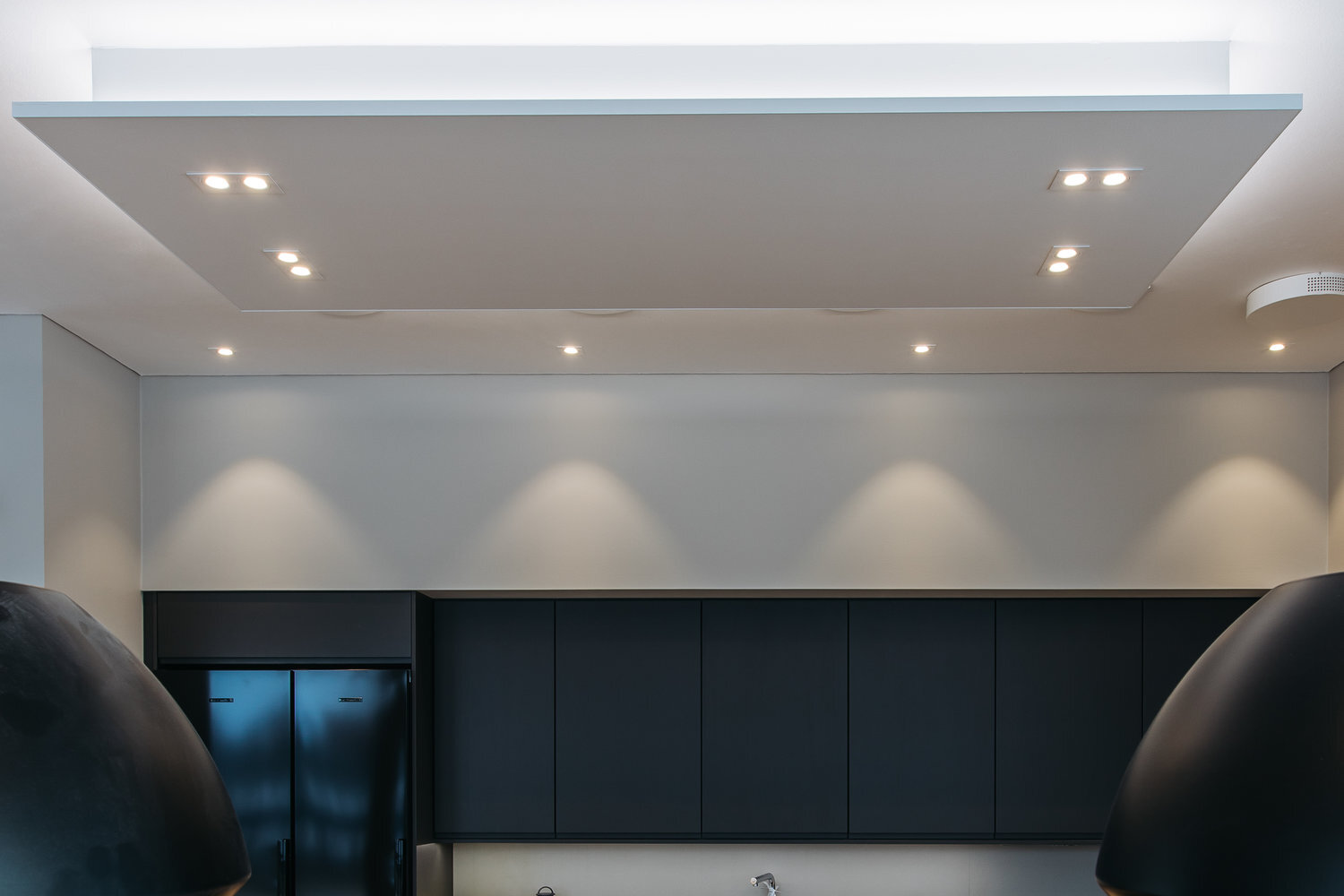How do you create effective indoor lighting?
Creating good lighting starts with lighting design. We put together a list of lighting design considerations to create a functional and coherent lighting scheme. The lighting design will benefit the electrical designer, the building designer and the interior designer. It is also a great help during the construction/installation phase.
A lighting plan should be created before the electrical plan. This will ensure that the luminaires are placed in the right places and that the wiring takes into account the lighting needs.
Whether you want smart lighting or traditional lighting controlled by switches. Smart lighting has become more common because of its ease of use and usability. Lighting can be adapted to changing needs, and automation can be used to increase energy savings. Smart lighting can be controlled by a smart device or switches, eliminating the need to think about placement in advance. However, if traditional switches are chosen, their placement needs to be considered. How many switches are needed, where the light can be easily controlled and which lights work with which switches.
You have to think about the use of the space. In addition to adequate general lighting, you need to consider whether you also need task lighting for precise work or mood lighting.
What type of lighting is desired for the space? Do you want discreet light sources or spectacular luminaires. Inconspicuous luminaires and indirect lighting can create uniform general lighting, decorative luminaires can make a space look attractive and comfortable, and spotlights can focus light where it is needed.
What colour temperature of light is appropriate for the space? In order to create uniform lighting, the colour temperatures of luminaires should be similar. If accuracy is required in the space, lighting above 4000 Kelvin is recommended. For a more tranquil atmosphere, a warmer Kelvin value (3000K) is recommended. Also consider adequate colour rendering index (CRI) to ensure that colours are given their due. Light colour temperature adjustable luminaires are a good option for light colour, as they allow you to adjust the light colour temperature to suit the situation.
In renovation and new build projects, you need to anticipate how light will affect the surfaces of the space and whether the colour will bend to yellow, blue or what?
Indirect light can be used to highlight desired areas, furniture and elements, or to bring additional light into a space. Lighting can be installed on staircases, shelves, ceilings - in fact, anywhere.
Pay attention to the interior design of the property. Dark interiors need considerably more light than light interiors. Where glossy materials reflect light, matt ones eat it up.


